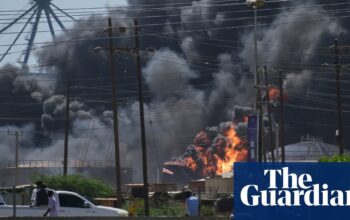After Table Mountain, the candy-coloured houses of Bo-Kaap have become one of Cape Town’s most iconic images, a key stop in any tourist’s visit to the South African city and a must-have for Instagram feeds.
However, many residents of the historic Muslim district are increasingly fed up with tour buses snarling up traffic, people blocking streets as they pose for photos and the mushrooming of outsider-owned tourism businesses, as the spectre of gentrification looms over the central area.
Cape Town is increasingly popular with digital nomads and wealthy Europeans seeking second homes to escape to during northern hemisphere winters.
The number of tourists visiting the Mother City also continues to rise, although it is yet to surpass 2019’s pre-pandemic peak. Foreigners arriving at its airport last year in the prime holiday month of December were up 3.7% from 2023 to more than 160,000, most of them tourists.
In November, a group of residents protested outside the Bo-Kaap Museum, which is housed in one of the area’s oldest homes. They carried signs reading: “No buses in Bo-Kaap” and “Stop exploiting Bo-Kaap”.
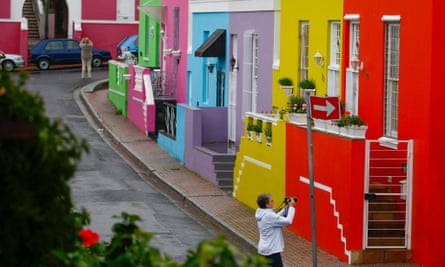
“Tourism has become an attraction in Bo-Kaap, but … it’s a double-edged sword. It brings some money into Bo-Kaap, but very little,” said Osman Shaboodien, the chair of the Bo-Kaap Civic and Ratepayers Association and one of the protest organisers.
“Bo-Kaap has a tourist problem. First, it’s over-tourism. There’s too many of them that come up here. Secondly … it has very narrow streets and it can’t accommodate these buses. And, thirdly, there are no places for them to park.”
Bo-Kaap, meaning “above the Cape” in Afrikaans, hugs the slopes of Signal Hill, with Cape Town’s downtown just below. It is one of the city’s oldest residential areas, the first houses having been built in the 1760s.
Descendants of Muslim enslaved people brought to the Cape by the Dutch from Indonesia and Malaysia, who became known as Cape Malays, lived alongside European, African and Asian immigrants.
Plans to raze Bo-Kaap, like the nearby District Six area, during the apartheid era were stopped with the help of ID du Plessis, an official who had studied Cape Malay culture, according to The Story of Bo-Kaap podcast. However, its designation as a Cape Malay-only area in 1957 meant other residents were evicted, most to the Cape Flats townships on the edge of the city.
Today, there are seven mosques in an area just 2km long and 500m at its widest point, with another four mosques just outside it. Many houses are emblazoned with pro-Palestine murals.
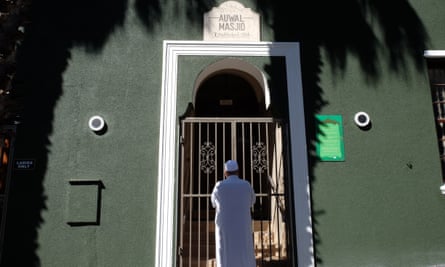
Among residents’ fears is that outsiders moving into the area will lodge successful noise complaints about the calls to prayer and that new businesses will be awarded alcohol licences.
“I know I can’t stop [gentrification]. My job really is to try to preserve the story of Bo-Kaap that underpins our identity and the identity, the national heritage, of this country,” said Zaki Harris, a tour guide from Bo-Kaap, who wants authorities to educate guides from outside the area about its history and to provide more opportunities for residents.
“Locals need to participate in the tourism economy, otherwise they’re out,” said Harris, who also chairs the Bo-Kaap Tourism Association, in an interview at the Bo-Kaap Deli, a cafe run by a local family.
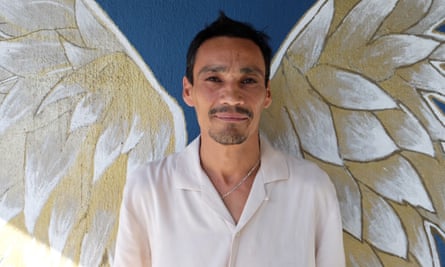
Tour guiding is regulated nationally, said James Vos, the mayoral committee member for economic growth. He added that the city funds Cape Town Tourism to provide “training and development for its nearly 1,000 members, many of whom reside in Bo-Kaap”.
Shaboodien and the ratepayers’ association are fighting against a proposed six-storey, serviced apartment building they say will tower over the minaret of the nearby Auwal Mosque, South Africa’s first mosque, built in 1794.
Flyt Property Investment, the developer of the site, a disused carpark, did not reply to interview requests. It told the Cape Times newspaper it had redesigned the original nine-storey proposal after a “public participation process”. A final planning decision is due by 21 April.
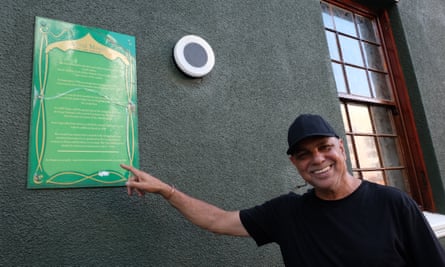
“You can consult the community as much as you want, but if you already intend to build what you want to build, then the consultation becomes a tick box,” said Shaboodien. “We [are] not against this construction. The architecture must fit into the [area].”
The deputy mayor, Eddie Andrews, said: “Whilst the city understands the community’s concerns, all development applications are assessed against the requirements of the municipal planning by-law and relevant city policies before a decision is made.”
He noted Bo-Kaap was protected as a heritage protection overlay zone. “The city must ensure least possible impact on heritage while also considering social and economic benefits,” he said.
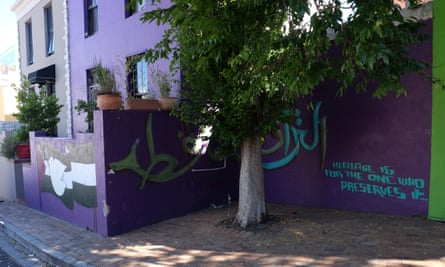
In her parents’ plum-coloured house on a quiet courtyard, Nurahn Essop runs a cafe and helps her mother, Faeeza, teach tourists how to cook Cape Malay food. “We’ve made the most of it,” she said, of the influx of visitors. “Had we not, I don’t think our parents would be able to afford to live here.”
Essop has moved to an area 20 minutes’ drive away with her children, where she is paying lower property taxes on a house that is 10 times bigger than her childhood home. She said she worried what would happen once her parents died.
“Bo-Kaap is more than just the pretty houses and the colour. It’s also about the people and the history of the neighbourhood. I had an amazing childhood here.”
Source: theguardian.com
